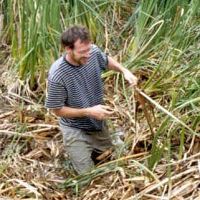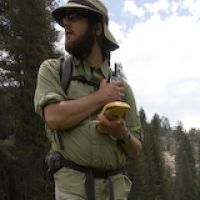Meadows et al., 2013
Timber harvest effect on soil moisture in the southern Sierra Nevada: Is there a measurable impact?
Meadows, M.W., R.C. Bales, M.H. Conklin, M. Goulden, P.C. Hartsough, J.W. Hopmans, C.T. Hunsaker, R.G. Lucas and A.I. Malazian (2013)
American Geophysical Union, Fall Meeting 2013, abstract #H11B-1165
-
Sierra, STAFF
-
Sierra, INVESTIGATOR
-
Sierra, INVESTIGATOR
-
Sierra, INVESTIGATOR
-
Sierra, INVESTIGATOR
-
Sierra, COLLABORATOR
-
Sierra, INVESTIGATOR
-
Sierra, GRAD STUDENT
-
Sierra, GRAD STUDENT
Abstract
We monitored soil-moisture storage, evapotranspiration and streamflow in a Sierra Nevada mixed-conifer forest for three post-snowmelt spring/summer seasons during water years 2010-2013. We measured volumetric water content using a COsmic-ray Soil Moisture Observing Systems (COSMOS) to estimate shallow soil-moisture storage and an eddy-covariance flux tower to measure evapotranspiration, covering an area of about 20 ha. Soil-moisture sensors were also strategically placed at depths of 10, 30, 60 and 90 cm at 30 locations in and around the COSMOS and tower footprints. Timber harvest occurred during the summer of 2012, involving uneven-age thinning limited to trees less than 76.2 cm diameter at breast height (DBH). Timber harvest intensity varied by tree size class: approximately 39% of the trees 0 to 25.5 cm DBH, 21% of the trees 25.5 to 50.8 cm DBH, and 4% of trees 50.8-76.2 cm DBH. Merchantable timber removed from the site was about 81-100 cubic m per ha. Annual evapotranspiration was similar for all four years, averaging about 80 cm each year, despite large variability in annual precipitation amounts. Annual evapotranspiration was about 10% lower following harvest. However, 2012 and 2013 were both dry years. Water year 2011 was one of the wettest years on record - approximately 200 cm of precipitation - while 2012 was one of the driest with 70 cm of precipitation. Each year soil desiccation immediately followed snow-cover depletion, dropping from field capacity by about 20% volumetric water content over a 3-month period. The rate of soil-water loss was about the same for all years. In 2012 and 2013 the dates of snow disappearance were 2-3 months earlier than in 2011. About half of the annual total evapotranspiration for 2010-2012 occurred during the 3-month period following snowmelt. Each year, total summer precipitation was only 4-6 cm. Thus soil-water storage derived from snowmelt and rainfall provides much of the moisture for evapotranspiration in the mixed-conifer forests of the Sierra Nevada, in addition to streamflow. We conclude that data to date are not enough to show significant effect on ET and soil moisture due to harvest treatment. Timing of soil desiccation is largely dependent on amount of annual precipitation and the timing of snow disappearance while ET varies little from year to year.
Citation
Meadows, M.W., R.C. Bales, M.H. Conklin, M. Goulden, P.C. Hartsough, J.W. Hopmans, C.T. Hunsaker, R.G. Lucas and A.I. Malazian (2013): Timber harvest effect on soil moisture in the southern Sierra Nevada: Is there a measurable impact?. American Geophysical Union, Fall Meeting 2013, abstract #H11B-1165.
 This Paper/Book acknowledges NSF CZO grant support.
This Paper/Book acknowledges NSF CZO grant support.
Explore Further









